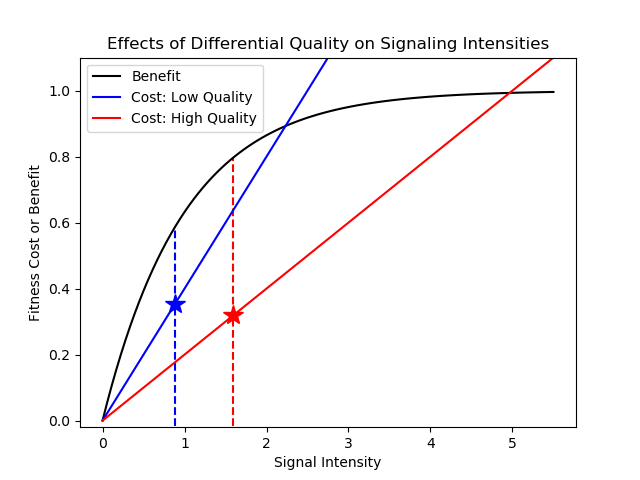Cancer Corruption
Behind the Paper
Viewing Cancer Through the Lens of Corruption: Using Behavioral Ecology to Understand Cancer
Anuraag Bukkuri and Frederick R. Adler
Read the paper Our paper begins by outlining the five main mechanisms that prevent deceptive signaling in nature: (1) eliminating conflicts of interest, such as through the high relatedness of sterile worker ants in a colony, (2) making signal cost quality-dependent, such as the energetically expensive and time consuming songs of territorial birds, (3) making signal cost need-dependent, such as begging by nestlings, (4) enforcement, such as through individually directed skepticism in squirrel alarm calls, and (5) physical constraints, such as those that body size puts on vocalization frequency. We show how cancers evolve ways to escape each of these controls through uncontrolled growth, oncogene expression, loss of tumor suppressors, T cell exhaustion, and immune evasion, respectively. We then discuss two related concepts: co-option, referring to the process by which cancer cells can induce other cells in their microenvironment to work for them (e.g., inflammation causing pro-tumor cell polarization and immune cells promoting the "angiogenic switch") and collusion, in which cancer cells within and among tumors work together to gather resources and subvert the signaling environment (e.g., secretion of exosomes in hypoxic conditions aids in angiogenesis and metastasis and PACCs aiding in the evolution of therapeutic resistance).
Finally, we draw on public policy to rethink standard treatment paradigms. We discuss two main ways to combat cancer corruption: the stick, punishing corruption via taxation, and the carrot, changing incentive structures. Namely, we urge cancer biologists to consider the implications of targeted therapies that leave a wide range of alternate corruption strategies cancers can use to evade treatment and proliferate. In contrast, standard chemotherapy affects all rapidly dividing cells, agnostic to the specific form of corruption. Furthermore, by changing the incentive structure through oncogene-induced senescence, standard chemotherapy, or evolutionarily informed treatment strategies such as the sucker's gambit, we can steer cancers to become more easily treatable or prevent them from dividing rapidly.
Our paper begins by outlining the five main mechanisms that prevent deceptive signaling in nature: (1) eliminating conflicts of interest, such as through the high relatedness of sterile worker ants in a colony, (2) making signal cost quality-dependent, such as the energetically expensive and time consuming songs of territorial birds, (3) making signal cost need-dependent, such as begging by nestlings, (4) enforcement, such as through individually directed skepticism in squirrel alarm calls, and (5) physical constraints, such as those that body size puts on vocalization frequency. We show how cancers evolve ways to escape each of these controls through uncontrolled growth, oncogene expression, loss of tumor suppressors, T cell exhaustion, and immune evasion, respectively. We then discuss two related concepts: co-option, referring to the process by which cancer cells can induce other cells in their microenvironment to work for them (e.g., inflammation causing pro-tumor cell polarization and immune cells promoting the "angiogenic switch") and collusion, in which cancer cells within and among tumors work together to gather resources and subvert the signaling environment (e.g., secretion of exosomes in hypoxic conditions aids in angiogenesis and metastasis and PACCs aiding in the evolution of therapeutic resistance).
Finally, we draw on public policy to rethink standard treatment paradigms. We discuss two main ways to combat cancer corruption: the stick, punishing corruption via taxation, and the carrot, changing incentive structures. Namely, we urge cancer biologists to consider the implications of targeted therapies that leave a wide range of alternate corruption strategies cancers can use to evade treatment and proliferate. In contrast, standard chemotherapy affects all rapidly dividing cells, agnostic to the specific form of corruption. Furthermore, by changing the incentive structure through oncogene-induced senescence, standard chemotherapy, or evolutionarily informed treatment strategies such as the sucker's gambit, we can steer cancers to become more easily treatable or prevent them from dividing rapidly.
© 2025 - The Mathematical Oncology Blog